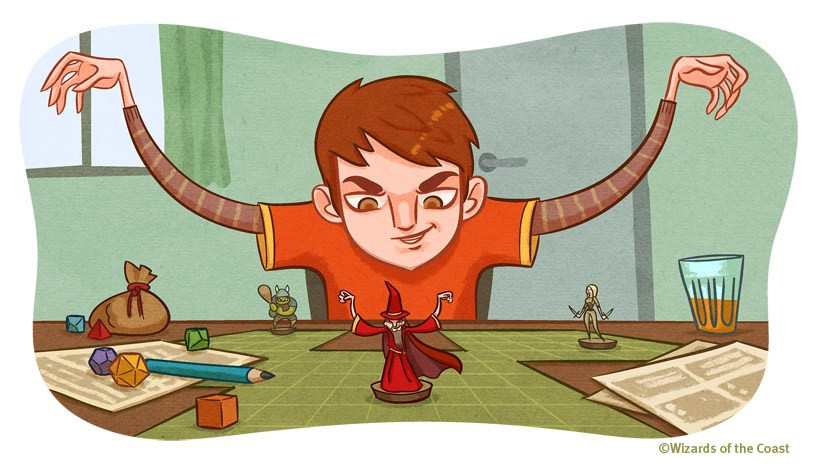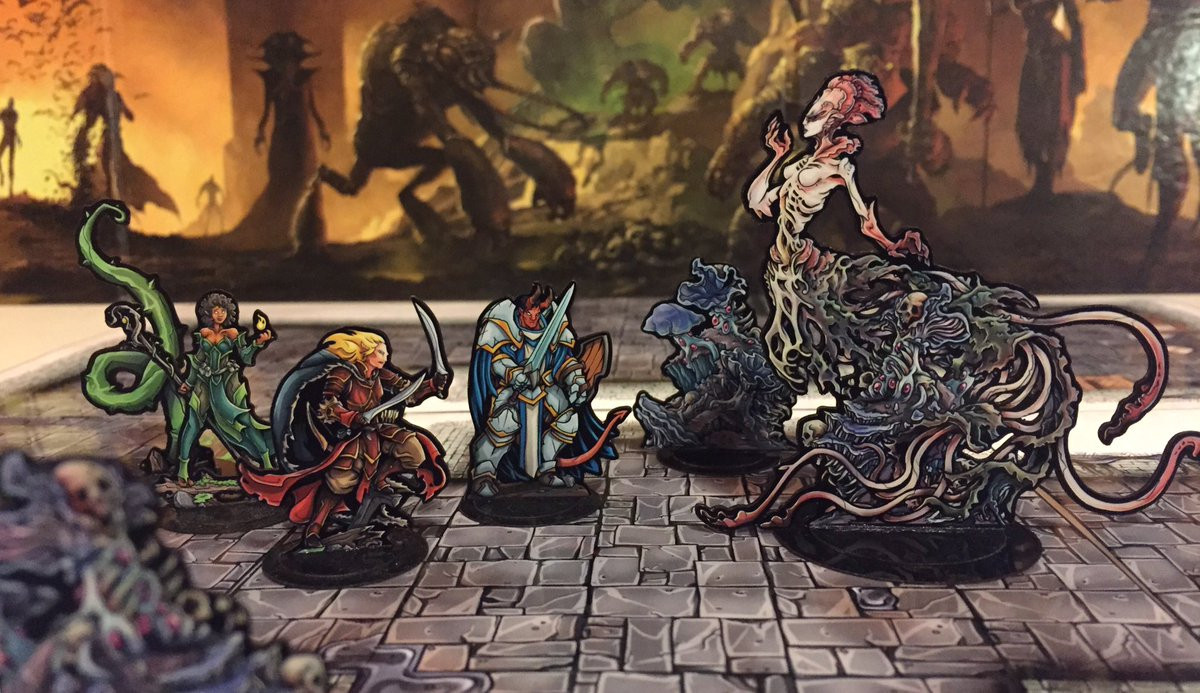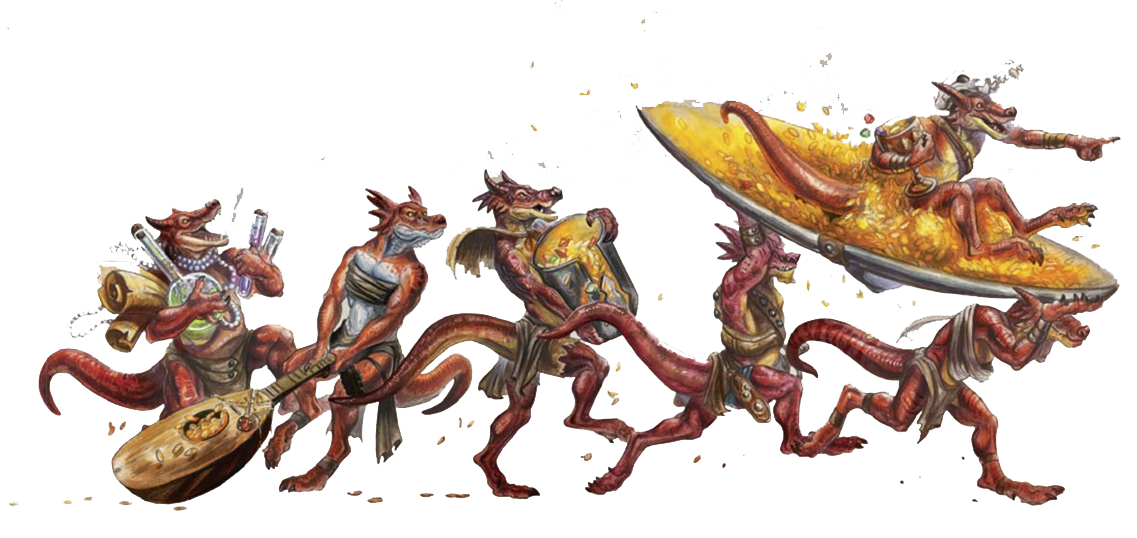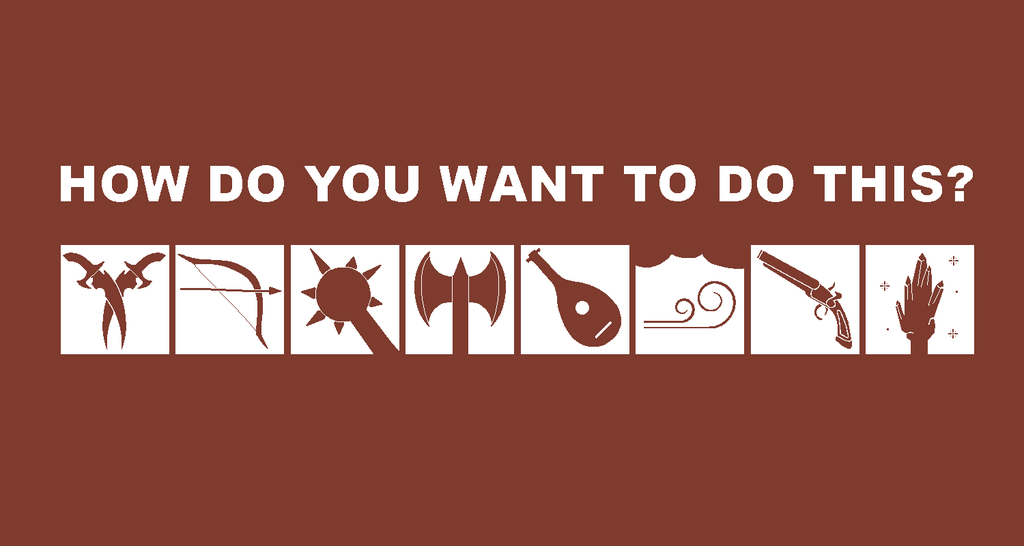DMing for Young Kids
Kids will do the unexpected in unexpected ways, role play harder than adults, and fall in love with physician owl bears
Running a game of Dungeons and Dragons is tremendously fun. You and your players have agreed to collectively tell a story with their characters in the starring roles. As the Dungeon Master you’ve prepared a fun and engaging adventure to be everyone’s source of entertainment for a few hours. When everything clicks, it’s great. However, you might find that it has a tendency to fall apart in unique ways when your audience is young kids.
If you've ever run a game for kids before, especially 8 to 10-year-olds with limited or no experience, this scenario might sound familiar.
A few minutes in, attention starts to wane. Some of the kids are talking at the same time and they all want to act simultaneously, turning the fun game you planned into a chaotic exercise in frustration for everyone at the table. Feelings are hurt, patience has abandoned you, and your vision of introducing new, young players to the wonderful world of D&D has evaporated.
It’s easy to feel stuck, frustrated and out of control when DM’ing for young, inexperienced players. I know I've felt that way. It is a genuine disappointment to walk away from a session knowing some of your players didn’t have a good time.
Fortunately, you can take specific steps before and during gameplay to ensure a fun, rewarding session of D&D for everyone. The following advice was hard earned, freely given, and hopefully helpful.

Prepping for Young Players
Much has been written on best practices when prepping a D&D session: plan but don't over-plan, be ready with random tables, NPCs, secrets, rumors, and plot hooks, rely on your sourcebooks but be ready to throw it away, and so on. It's all great advice, and you can find lots of it on this site (and many others), but when preparing for a session with young, newbie players, take these extra steps:
Throw the elaborate campaign or one-shot right out the window
That multi-session campaign steeped in bottomless lore and elaborate backstories, complete with a double-crossing plot twist and fantastically mapped, multi-level underground dungeon is going to fall flat. Instead, keep it very simple.
Create an obvious Big Bad Guy (or Gal) with clear motivation.
For example, “My army of water elementals will destroy every brick of this lighthouse — and everyone in it — until I find the treasure buried underneath it!” They'll immediately have a clear end-goal, and will know when it's accomplished.
Keep it SHORT
One hour is usually all this age group can handle.
Use maps and minis
Not only are they cool and exciting, minis on a map help young minds conceptualize what’s happening, where their characters are in relation to NPCs, terrain, monsters, etc. Your maps needn’t be elaborate, but kids do benefit from this visual reference.

Plan for a shopping trip
In my experience, kids love to role-play shopping for weapons and magical items. I mean, they really love it. Have a few tables you can roll on handy.
Additionally, kids love to receive trinkets and invent uses for them. What may be simply a carved wooden item to an adult may easily become something fantastic in the mind of an 8-year-old. Let them breathe life into the mundane!
Magic Items & Trinkets
Check out the following sources of magical items.
Running the Game
Before a single die is tossed, I always tell my young players, “We’re going to tell a story together, and your characters are the stars of the story.” I also set the ground rules right up front:
- Respect each other.
- Respect the DM.
- Treat the materials as if they were your own.
- Inappropriate language or behavior will not be tolerated.
- Rudeness towards me or each other will not be tolerated.
After having everyone verbally agree to the rules, it’s time to get down to the fun.
Kids play differently than adults
The adults I play with tend to separate roleplaying and combat. When a fight breaks out, the game turns into simple math: Roll to attack, 21 is higher than 15, roll for damage, minus 8 HP. Onto the next person who repeats the process, on and on until the baddies are dead, whereupon the looting begins like a pack of piranhas.

Kids don't stop role-playing during combat, instead, they often ramp it up. Completely invested in their character, they take great pleasure in describing exactly what happens with each attack, with no lack of detail. That description is their chance to have the spotlight and go to town with creative, descriptive, on-the-fly story-telling.
Kids don't stop role-playing during combat, instead they often ramp it up.
Try not to respond to a successful attack roll with a simple “that hits.” Instead, add some flavor, like “Your Great Axe cuts through the air and sinks into the orc’s shoulder. It lets out a rumbling howl. Roll to see how much damage you’ve done.” Better yet, encourage them to describe hits.
Understand that kids will do the unexpected. Adults do this too, of course, but young players are next level. I had a group of players decide to try and redeem the “Big Bad” once they found him. Likewise, another group refused to race dinosaurs through the town, and instead devised a plot to secretly free them from their captors. Be flexible and prepare to go with the flow. Remember, this is their story. You are just the catalyst.
Make short/long rests more interesting
D&D is a very fun game but it does have its less-than-thrilling moments, like short/long rests.
I’m sure many of you have had their party take a long rest to heal up and prepare for the next event in your campaign. While adults can be perfectly happy with, “You pass an uneventful evening in the empty cave,” that will bore kids to tears.
Spice it up! When my party of young players take a long rest, I have them visit Doc Coddle, M.D., their friendly, neighborhood Owl Bear physician. It's still just a standard long rest, but the interaction with Doc Coddle adds flavor as they receive treatment for their specific injuries, while observing the various bottles, jars and flasks of who-knows-what in his surgery. It’s fun, memorable, and lets the kids stretch their role playing muscles a bit. You might get a hook for a future adventure out of it, and Doc Coddle can toss them a healing potion or two if it'll help the party.

Doc Coddle, M.D is here to help.
Crowd control with turn-based actions
Often a table of excited players will all want to talk to the dragon, navigate the rickety rope bridge or brainstorm a way into the lighthouse all at the same time. It can get chaotic and frustrate for the players, as they all feel they’re not being heard. When this happens, I subtly introduce turn order.
In D&D, turn order is typically reserved exclusively for combat, but you'd be surprised at how well it removes chaos and enables fun when kids are involved. Take this scenario:
“At the top of the stone staircase is Longshore Lighthouse. The door at the lighthouse’s base is slightly ajar and light can be seen inside. A short stone wall surrounds the lighthouse and the gate is shut tight. Anne, you’re standing right at the gate. What would you like to do?"
"Ryan, you’re next.”
Ann describes the action her character takes while Ryan prepares, as he knows he’s next. Likewise, the other players know they’re not next, and therefore are likely to quiet down, or scheme amongst themselves. When Ryan takes his turn, I’ll prompt the next player to ready her action, and so on.
You needn’t play the entire game this way, of course, but be ready to toss it in as “crowd control.” If they’re all talking over each other and you can see frustration starting to build (or control starting to wane), shift into turn-based mode.
Let them pursue crazy ideas..
When the kids have an idea — even if it feels like a bad idea from your point of view — let them pursue it. Make the objective clear and give them the freedom to find their own solution. Ultimately it only matters that they have fun, not that they did something your way, or followed the rules exactly.
...but putting the adventure on rails is okay!
The complete and utter freedom of a sandbox adventure will fall apart quickly. Don’t be afraid to put an adventure on rails. They’ll respond to it just fine, especially the very young players, and you'll reign in the crazy, zany madness. If only just a little.
Provide suggestions and options to keep the game flowing
Kids may initially hesitate to role-play interactions, or simply may not know how. Don’t be surprised if asking, “What do you want to do?” elicits blank stares. Give them options without making it too obvious that you’re doing so.
“The gate surrounding the lighthouse is rusty and looks pretty rickety. There are many large stones on the ground.”
Eventually, they’ll get the idea. If they don't, keep making the suggestions more and more obvious. They'll get there.
Fart jokes!
This age group tends to like over-the-top or even goofy role-playing. Don’t be afraid to ham it up. The silly, wise-cracking dragon with a lisp and a giant, oversized peg leg will be a much bigger hit than the sullen temple guards. Sometimes bad guys fart when they die. It happens.
Sometimes bad guys fart when they die. It happens.
Fun > Rules
Don’t overdo it with the rules. Fun should be prioritized over adherence to the rules whenever possible. Remember, you’re playing with young kids, some of whom might have never played before. It's better to bend or break a rule and foster a love of this fantastic game than be a nit-picky stickler.
Janie wants to pull all of the arrows from her quiver, hold them in her fist and jam the lot into the kobold? Sure. Have at it, Janie. Evan wants to load his short sword into his crossbow and fire it into the dragon's eyeball? Do it.
I’m not saying that everything should be a free-for-all of success, but the wins are made more meaningful if there are losses as well. Let them miss. Let them take damage. Let them critically fail an attack roll and have their weapon fly out of their hand, landing 1d6 squares away. Just don’t let an amazing story moment squash Janie’s enthusiasm or creative idea because it doesn't fit within the rules as written.
No Player Deaths
This one is simple. Don’t kill the kids or their characters. Younger players get very attached to their characters - tread lightly when designing the first few encounters and get a feel for their comfort level. Character death could be interpreted as being picked on or that they are bad players. At this age, it’s best avoided.
You can always have the players get knocked out and/or captured if damage gets out of hand. They have a chance to escape from prison, save the day, and live to fight another day.
Let the players narrate combat
I like to give them a group option. “How do you want to do this?” Let each player describe how they’d contribute to the action, and give them awesome descriptions of how epic and effective their plan was.

Keep combat fast. While it’s fun, they will get bored and antsy if it goes on too long. Don’t be afraid to fudge numbers, or NPC hit points. They won't care, and they'll never know.
It's all about the fun, after all.
These tips and ideas should help you reach your goal: a room full of kids laughing, creating, thinking and enjoying a great day of Dungeons and Dragons. Please send us your tips and tricks, we'd love to keep this article fresh!
A few extra tips for good measure.
- Keep puzzles simple. Young kids frustrate easily.
- Props are awesome. Find a way to incorporate physical items at the table: little maps, coins, letters from allies or bad guys, you name it.
- Ask the older players to help/mentor the younger ones.